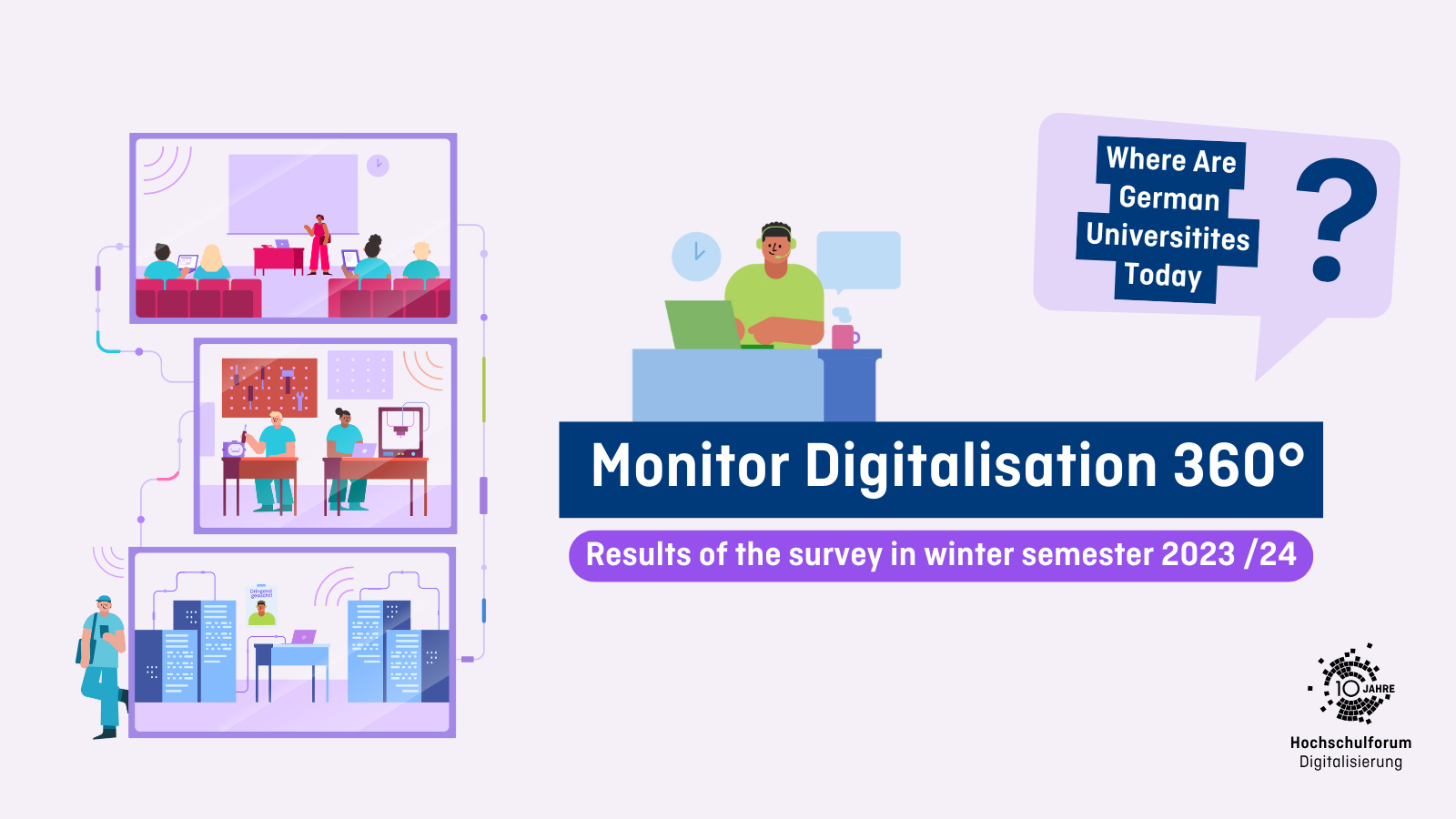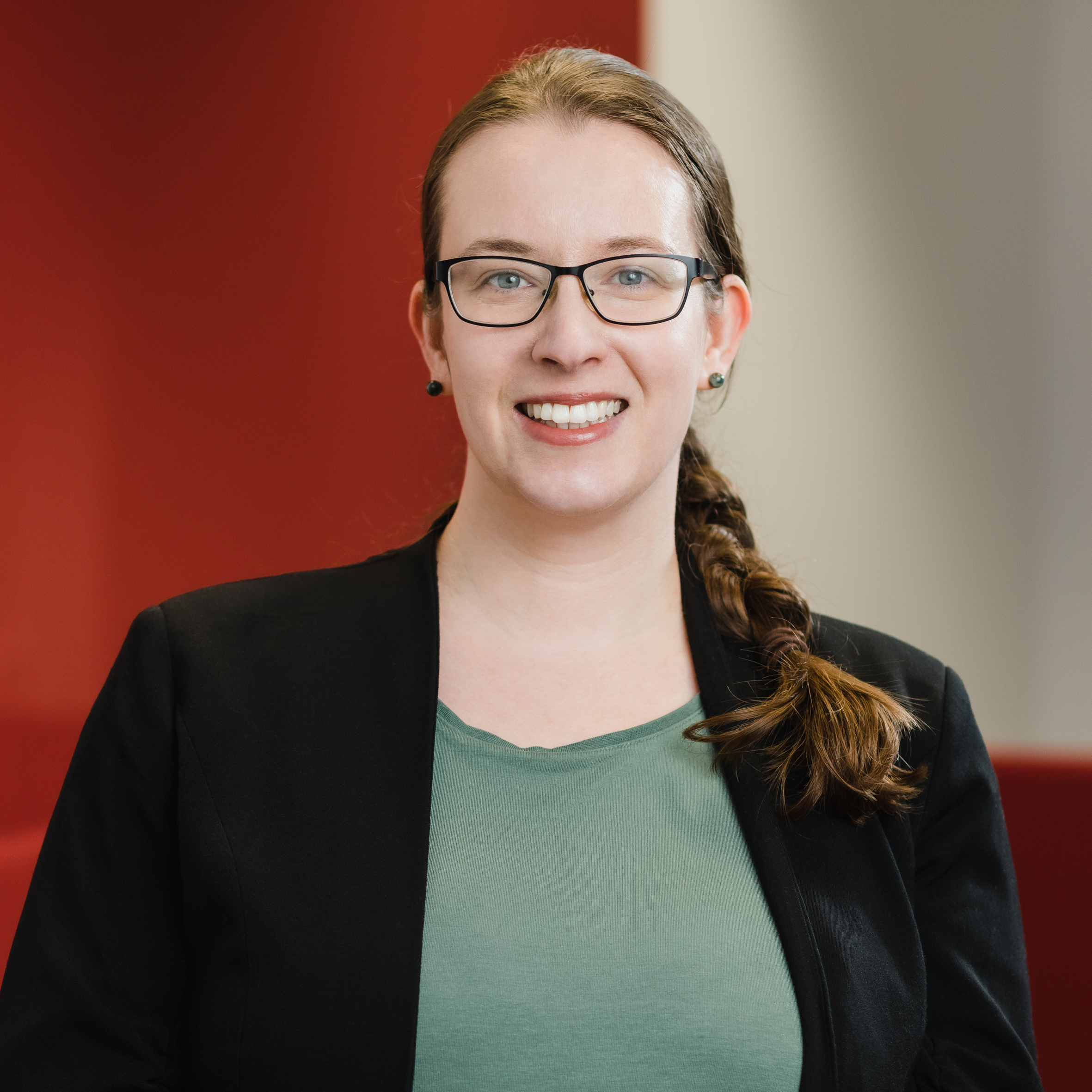Monitor Digitalisation 360° – Where Are German Universities Today?
With the Monitor Digitalisation 360°, the HFD conducts a biennial analysis of the state of digitalisation in teaching and learning across German universities. University leadership, faculty, students and support staff are surveyed to provide a comprehensive overview from strategy to implementation level. The latest study (winter semester 2023/24) shows, among other aspects, that (digitally enhanced/enriched) face-to-face teaching remains the norm at German universities and universities of applied science. Just under half of lecturers are aware of their own university’s teaching strategy and take it into account in their teaching planning. Satisfaction with technical equipment has increased, but there is a lack of specialised IT staff. Future skills and competency-oriented learning formats have also found a place in teaching.

University leadership continues to advance digitalisation as a strategic issue. Efforts to translate this strategy into practice remain insufficient.
The Monitor Digitalisation 360° shows: progress has been made in recent years regarding digitalisation at German universities. Almost all universities have a strategy for digitalisation for teaching and learning and the topic is being taken into account in processes for learning environment and curriculum development. University leadership have thus placed the topic on their agenda. In 80.4 % of cases, presidents/rectors and vice presidents or vice rectors for teaching are significantly involved. Faculty management is generally involved in university-wide processes. Additionally, most faculty members are motivated to further develop their teaching in the context of digitalisation and incorporate the strategy — if they are aware of it. However, there is often a lack of time and suitable conditions, particularly in terms of support structures.
Staff and Infrastructure: Technical equipment has improved, but power sockets remain scarce – Staffing levels still have room for improvement.
The current survey shows a significant improvement, particularly in technical equipment: while 36.2% of university leadership rated equipment as generally inadequate in the previous survey, this figure has now dropped to just 6.6%. This positive trend is echoed by faculty and students, who assess the development in a similarly positive light. Nevertheless, challenges remain, especially in terms of Wi-Fi coverage and the number of power sockets in lecture and seminar rooms.
The biggest current challenge for university leadership is the shortage of IT support staff: 38.5% report difficulty in finding enough qualified personnel. Despite significant improvements in technical equipment, challenges persist in providing suitable learning spaces. In particular, self-study areas for students remain limited, with half of university leaders indicating a shortage of individual workspaces on campus. Yet it is precisely these individual and group workstations that are used most frequently by students.
In-person teaching, enriched with digital tools, still predominant
The 2022 monitor survey has shown: after the end of COVID-19 restrictions, most events and classes at German universities had returned to in-person teaching. The current results confirm this trend. However, in-person learning does not necessarily mean traditional face-to-face teaching. The spread of digital media and tools in teaching indicates a ‘normalisation effect’ of teaching of digitally enriched teaching. 63% of university leadership reported that strategic discussions are focused on “enriched in-person teaching.” For blended learning, which integrates in-person teaching with digital self-study phases, this focus was cited by 52.2%. Synchronous hybrid teaching is also on the strategic agenda for half of the universities. Students generally welcome these offerings, although there has been a slight decline. While 64.6 % of students wished for hybrid teaching to be an integral part of everyday university life in 2022, this figure dropped to 51.3 % in the current survey. However, this does not indicate that students want to return to traditional lectures. About half of the students would like teaching to be more multimedia-based and interactive. In general, a very heterogeneous picture emerges among students with regard to preferred digitalisation formats in teaching.
Competence orientation not yet strategically anchored but is gaining traction in teaching.
Almost one in two students stated that future skills were promoted as part of their courses or in extracurricular programmes. However, digital literacy and data literacy are typically acquired outside the formal curriculum. With regard to AI literacy, i.e. skills in dealing with artificial intelligence, 66.8 % of the students surveyed stated that either no offerings exist or that they are not aware of any such options.
Competence-orientated formats such as problem-based learning or peer learning can be used to promote future skills. However, little strategic relevance has been attributed to these so far. The Monitor Digitalisation 360° shows: The strategic debate tends to revolve around face-to-face teaching, online teaching and hybrid learning formats and co. Only 18.5% of university leadership indicated that problem-based learning, for instance, is a topic in strategic discussions. Nonetheless, competency orientation is gaining interest among faculty: 17% of faculty reported engaging in professional development on future skills over the past year, and nearly 60% of students say that problem-based learning is used in their studies.
AI as Game Changer?
The highly relevant topic of artificial intelligence in the higher education landscape was also examined as part of the monitor survey in the winter semester 2023/24. The data was published in July 2024 as a special report (German only)
Archive
Contact person:
 Jannica Budde
Jannica Budde
 Julius-David Friedrich
Julius-David Friedrich

